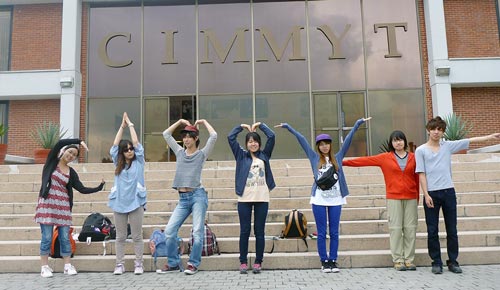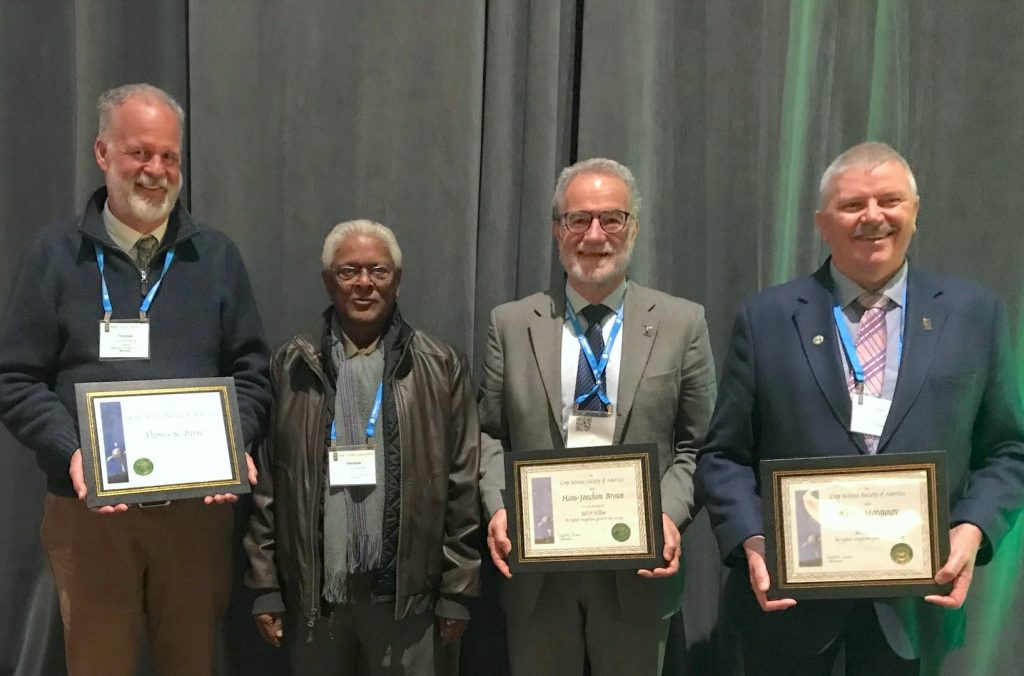
Two scientists working in the world’s leading public wheat breeding program at the International Maize and Wheat Improvement Center (CIMMYT) have been recognized with awards and fellowships this week at the annual meeting of the American Society of Agronomy, the Crop Science Society of America, and the Soil Science Society of America.
Hans-Joachim Braun, director of CIMMYT’s Global Wheat Program and the CGIAR Research Program on Wheat, has been honored with the American Society of Agronomy’s International Agronomy Award.
Alexey Morgunov, CIMMYT principal scientist and head of the Turkey-based International Winter Wheat Improvement Program (IWWIP) received the distinction of Fellow from the Crop Science Society of America. Braun was also distinguished with this fellowship.
Excellence in agronomy
The American Society of Agronomy’s International Agronomy Award recognizes outstanding contributions in research, teaching, extension, or administration made outside of the United States by a current agronomist. Braun received the distinction during an awards ceremony and lecture on November 12, 2019. The award committee made its selection based on criteria including degrees, professional positions, and contributions and service to the profession such as publications, patents, and efforts to develop or improve programs, practices, and products.
The award recognizes Braun’s achievements developing and promoting improved wheat varieties and cropping practices that have benefited hundreds of millions of farmers throughout Central Asia, South Asia and North Africa. Nearly half the world’s wheat lands overall — as well as 70 to 80% of all wheat varieties released in Central Asia, South Asia, West Asia, and North Africa — are derived from the research of CIMMYT and its partners.
“I am honored to be recognized by my fellow agronomists,” Braun said. “This award highlights the importance of international research collaboration, because the food security challenges we face do not stop at national borders.”
Braun began his 36-year CIMMYT career in Mexico in 1983. From 1985 to 2005, he led the International Winter Wheat Improvement Program in Turkey, implemented by CIMMYT and the International Center for Agricultural Research in the Dry Areas (ICARDA). As director of CIMMYT’s Global Wheat Program since 2004 and the CGIAR Research Program on Wheat since 2014, he is responsible for the technical direction and implementation of a program that develops and distributes wheat germplasm to more than 200 collaborators in more than 100 countries, grown on over half the spring wheat area in developing countries.
Crop fellows
Braun and Morgunov were also chosen as Fellows, the highest recognition bestowed by the Crop Science Society of America. Members of the society nominate worthy colleagues based on their professional achievements and meritorious service. Fellows are a select group: only three out of every 1,000 of the society’s more than 4,000 active and emeritus members receive the honor.
Morgunov joined CIMMYT in 1991 as a spring wheat breeder, working with former Global Wheat Program Director and World Food Prize laureate Sanjaya Rajaram. In 1994, he moved to Turkey to work as winter wheat breeder, and then to Kazakhstan, where he worked to develop and promote new wheat varieties for the Central Asia and the Caucasus region. He has led the International Winter Wheat Improvement Program in Turkey since 2006. In this role, he has been responsible for the release of more than 80 varieties in the region. He also completed a national inventory for wheat landraces in Turkey.
“I am pleased to be recognized as [a Crop Science Society of America] Fellow,” Morgunov said. “I hope this award brings more attention to the importance of finding, saving and using the vast diversity of crop varieties in the world, for resilient crops and healthy food for all.”
Braun and Morgunov were formally recognized as Fellows on November 13.
The annual meeting of the American Society of Agronomy, the Crop Science Society of America, and the Soil Science Society of America convenes around 4,000 scientists, professionals, educators, and students to share knowledge and recognition of achievements in the field. This year’s meeting was held in San Antonio, Texas.
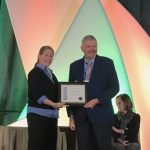
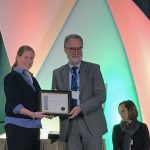
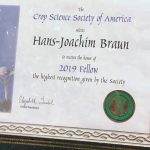
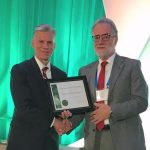
 Gender equality, youth and social inclusion
Gender equality, youth and social inclusion 